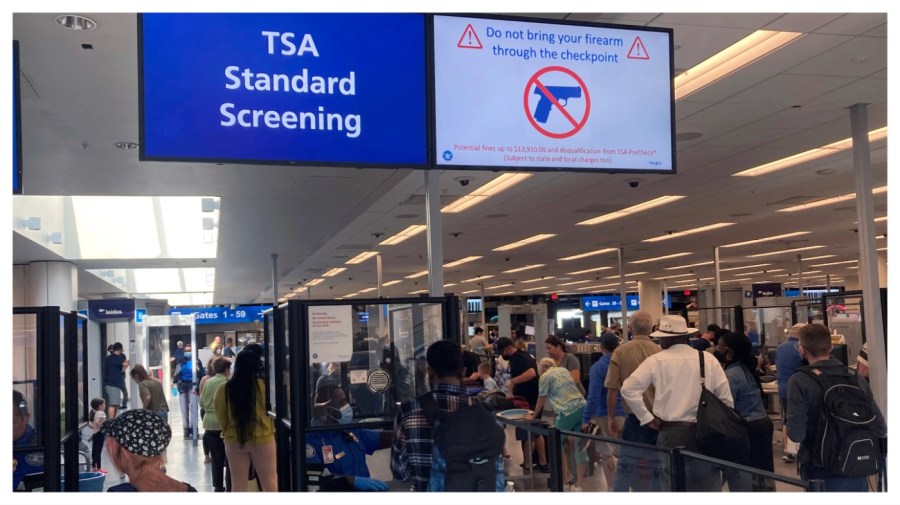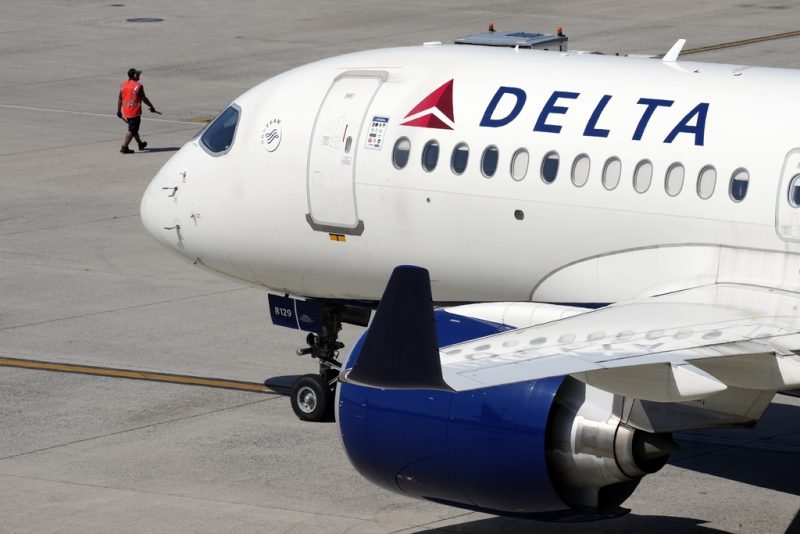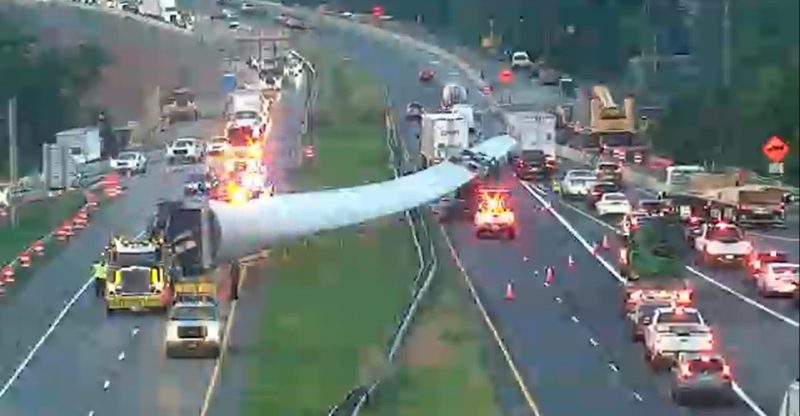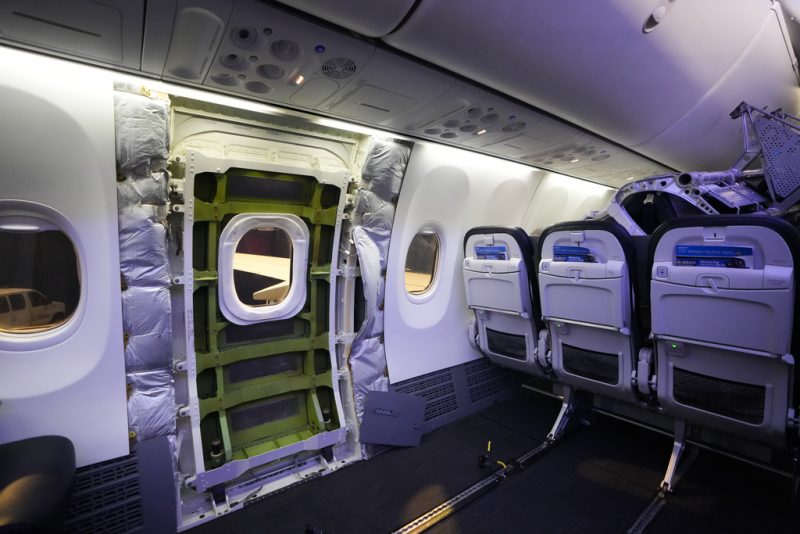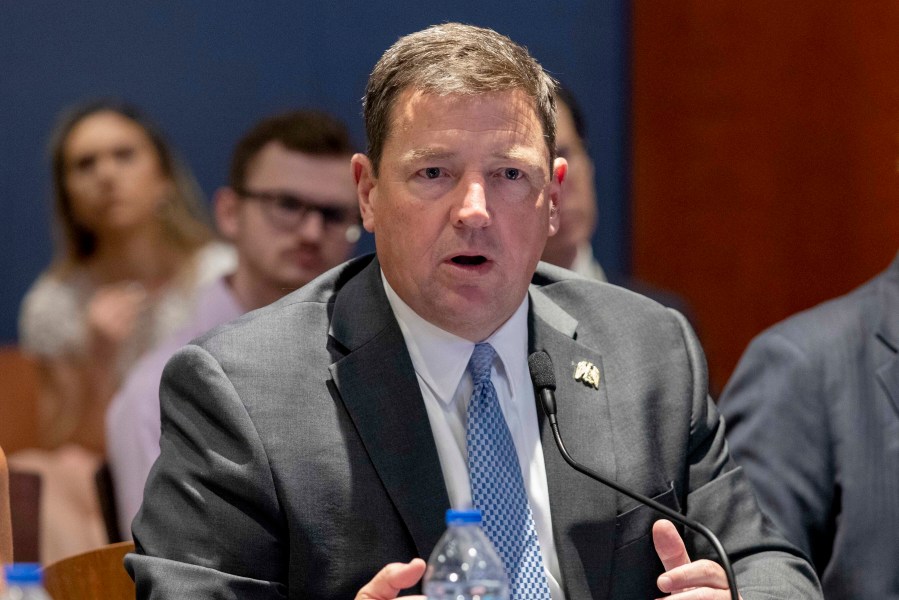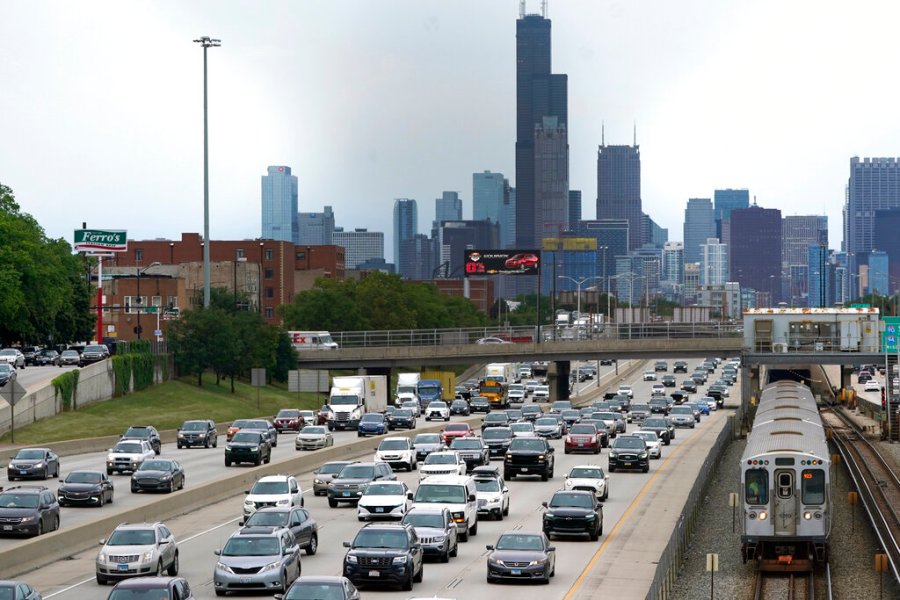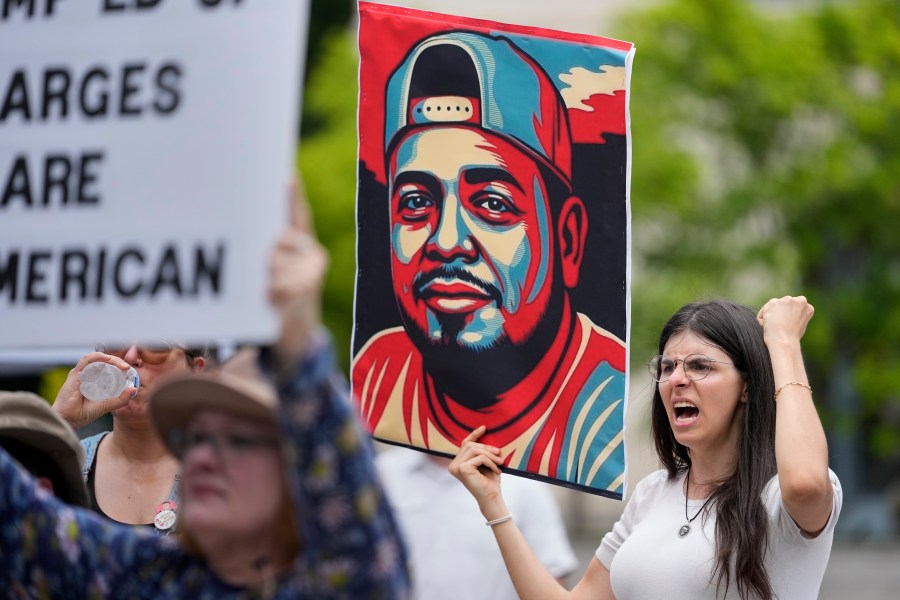The Transportation Security Administration (TSA) will permit travelers to keep their shoes on while going through screening at airports, rolling back a rule put in place almost 20 years ago.
The Department of Homeland Security (DHS), which includes the TSA, is set to hold a press conference to formally announce the change on Tuesday at 5 p.m. EDT, saying the new policy will make screening “easier for passengers, improve traveler satisfaction and reduce wait times.”
The press conference will take place at Ronald Reagan Washington National Airport and will be hosted by DHS Secretary Kristi Noem.
The White House seemingly confirmed the change, with the press secretary Karoline Leavitt responding to a CBS News report on the shift in policy by saying “Big news from @DHSgov!” on Tuesday morning. She included an emoji of a plane and a shoe.
Travelers have been required by TSA to take off their shoes to screen for explosives since 2006 due to “intelligence pointing to a continuing threat.”
The rule was put in place years after Richard Reid, in December 2001, tried but failed to detonate bombs tucked in his shoes on an American Airlines flight from Paris to Miami.
Passengers will still be required to pull out or take off other items to pass through TSA checkpoints. And there’s a long list of items that can’t come through at all.
Here’s what to know:
Send it through the scanners
Passengers going through TSA scanning have to remove electronics bigger than their phones, such as tablets and laptops, from their bags.
They also have to remove their belts, particularly if they feature metal buckles, and take off their “light” outerwear or bulky clothing, according to TSA.
Light garment includes clothing that has a full front zipper or buttons, such as blazers, vests, sports coats and light jackets. Button shirts are excluded. Bulky clothing is considered that be loose or does not conform to the traveler’s contour, including large sweaters, cardigans, ponchos and oversized pullover hoodies, per TSA.
Passengers are asked to empty their pockets, placing their cell phones, keys, coins and other items in the bin to be screened.
Travelers who are enrolled in TSA PreCheck can keep their shoes, light jackets and belts on, and keep their laptops in their bags.
Limit liquids to 3.4 ounces
Travelers can bring aerosols, creams, gels and pastes in their carry-on bag, but they cannot exceed 3.4 ounces for each item.
No more than 3.4 ounces of bottled water, coffee and juices are allowed in carry-on bags.
Solid food items can be placed in carry-on or checked bags. But liquid foods such as honey and gravy are subject to the 3.4-ounce limit, which also applies to salsa, sauces, creamy cheese and yogurt.
Leave it at home
Opened alcohol
Alcoholic drinks with more than 24 percent, but not over 70 percent alcohol, are permitted in checked bags up to 1.3 gallons. They must be in unopened retail packaging.
Weapons
Weapons such as guns and ammunition, including cap and BB guns, are prohibited in carry-on bags. Stun guns and tasers are also prohibited, along with most types of knives, unless they have rounded blades, such as plastic cutlery and butter knives. Axes and pickaxes are also not allowed.
Pepper spray and other types of defense sprays, along with tear gas, are not permitted on carry-on items. Baseball bats and fireworks are not permitted.
Flammables
Dynamite, firecrackers, hand grenades and fireworks are not allowed. One book of safety matches is allowed on carry-on bags, but all matches are prohibited in checked baggage, according to TSA.
Most types of lighters are allowed on carry-on bags, but passengers have to take steps to prevent unintentional activation. This could include removing the battery from the lighter and putting it into a protective case.
